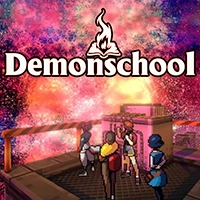

Story of Seasons has been taking a trip down memory lane, with its recent remakes of older games like Friends of Mineral Town and A Wonderful Life. Story of Seasons: Grand Bazaar joins the expanding list of being revived for a new audience, with new quality of life features that may entice the crowd that had played the original. As with all Story of Seasons titles, this game is a standalone, and the barrier to entry is very low, making jumping right in a breeze.
You have decided to move into Zephyr Town, which was once known for its Bazaar. But in recent times, the weekend bazaar isn’t doing as well as it used to. With your arrival, however, the mayor and townspeople hope that new life will be revived in both the bazaar and the town. Much like a lot of Story of Seasons games, that is about a deep as the story goes, with more focus paid to the gameplay and the interpersonal relationships between yourself and the villagers. As your bazaar level increases, the story will progress with it, introducing new characters that will help bring the Bazaar back to its former glory.
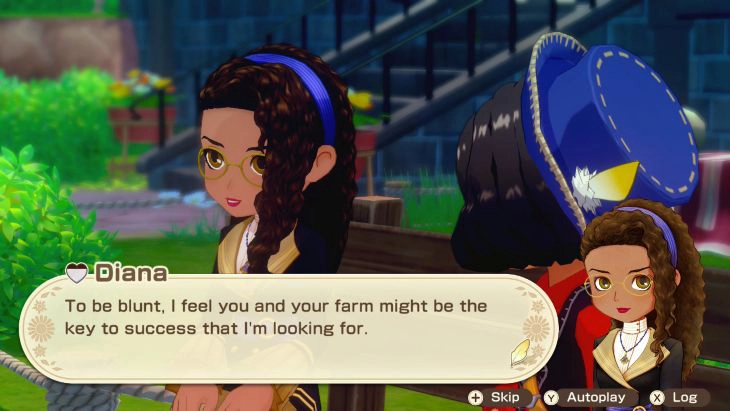
All characters have either relationship bars that you can build up, whether they are romance or friendship related. However, some blocks pop up just before a level up to the next heart. In these cases, you’ll have to perform errands for a player, which usually means giving them a specific item. Once you’ve completed this task, you can continue with building rapport (until the next block, which will involve a harder item to procure). When it comes to the actual storylines with the characters, they can be hit or miss. The interactions felt surface-level, making it hard to connect with any specific character outside of their designs.
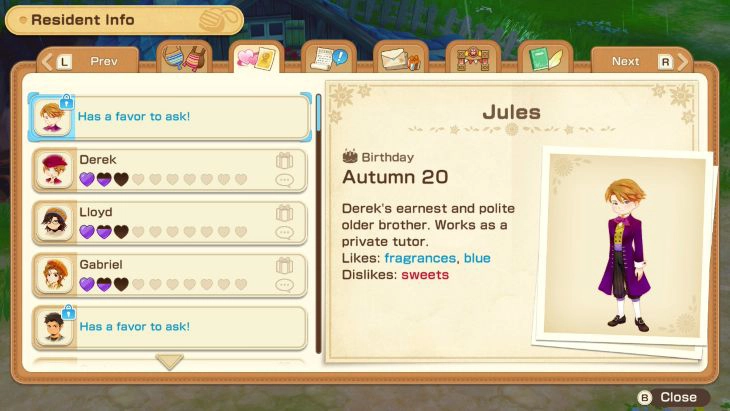
As you talk and get closer to characters, sometimes special events will pop up on the map, marked by a colorful exclamation mark. Simplistic though the writing is, these events do help to make the town feel livelier. The moments are cute, and if, for some reason, you do end up missing the time to actually see the cutscene (as they only appear during certain times of the day), you can always check back the next da,y and they should reappear.
Along with the quests given to you by characters when leveling up their friendship levels, characters will give you quests that can result in new shiny items, food dishes, and even new booths that will populate the Bazaar on the weekend. It is worth completing these quests for said rewards, especially when it comes to the food items. There are no timers for the side quests, so you can complete them at your leisure, much like the main story. Sprinkled throughout the months in the game, there are special festivals that bring the town together. These events can be anything from a horse derby to test your horse against the competition, or a flower festival where you give flowers to other villagers. Winning can result in a trophy that you can display in your house or potential buffs in relation to whatever the festival is focused on.
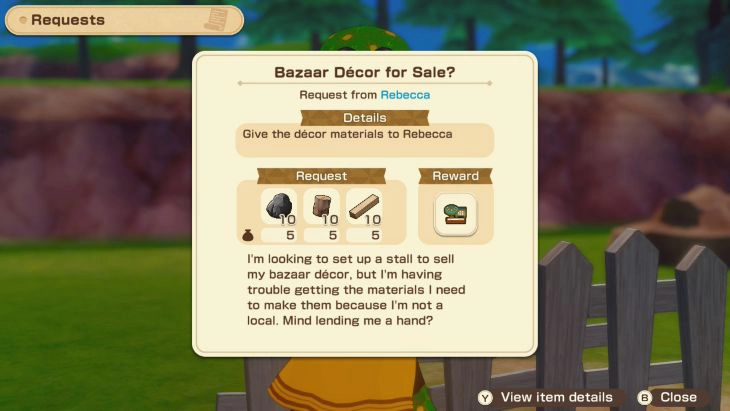
Like past Story of Seasons games, a good chunk of your time will be spent farming, gathering, crafting, and interacting with the townspeople. Anything that you collect, you’ll be saving up to sell at the Bazaar. While it can take a bit to get used to not just dumping everything into a box to get profit for the next day, it quickly becomes exciting planning out your inventory for the Bazaar. Anything you gather, craft, harvest, cook, and give as a gift is up for grabs when it comes to selling. But of course, even though you can sell a regular rock, why not use it to craft an item and sell that item for much more than you would get from a regular rock? One major downside of the gameplay, however, is the inventory management. When you first start, your storage capacity is minimal, both in terms of your bag and your larger storage in your house. There will be plenty of times where you’ll want to pick up an item, only for the game to tell you that you have no more room. And you can’t cheese the system by just laying items on the ground, as items placed on the ground eventually disappear after a couple of days.
The Bazaar is the main draw of the game. The Bazaar opens on Saturday every week, and any item that you wish to sell must be put into your store’s storage before you can open your table. In the beginning, you can only place three items on your table, although you can switch items on the fly. And if you want to maximize money, switching what you’re actively selling is a good habit to pick up. Most items will end up selling by the end of the day, although (because traffic is fairly steady and because of a lack of storage, resulting in you not having a lot to sell in the beginning). The Bazaar day is split into two selling periods (morning and afternoon) with a break in between that allows you to replenish your stock or even just browse around at other stalls to see what everyone else is selling.
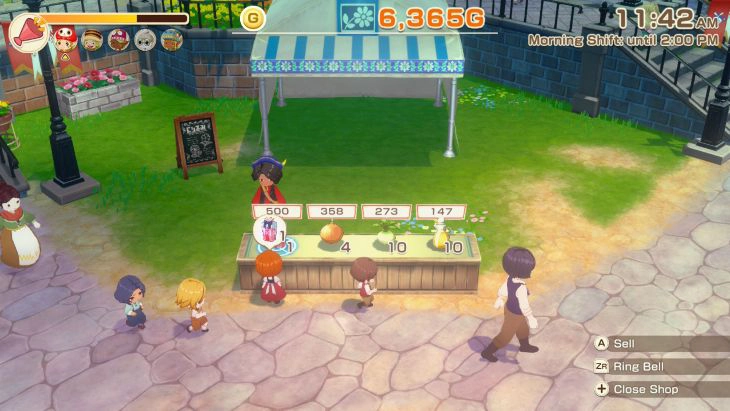
During the actual selling process, you stand behind your stall while people walk past. The prices are set for items automatically, taking one aspect of store management out of your hands. Sometimes, characters will naturally express an interest in your wares, stopping and requesting a specific amount. Once an item runs out, its place on the table will be empty until you place another item down. Sometimes, characters will slow down, only to express their disappointment about wanting a different item. Thankfully, these items always seem to be items that you have in your store’s storage. In these cases, you can swap that item onto the table, thus catching the interest of that person. But in the cases where people are just walking past, you can grab everyone’s attention by ringing your bell. Ringing your bell stops everyone near your table, causing them to browse your wares. Sometimes this will result in customers, and sometimes it doesn’t.
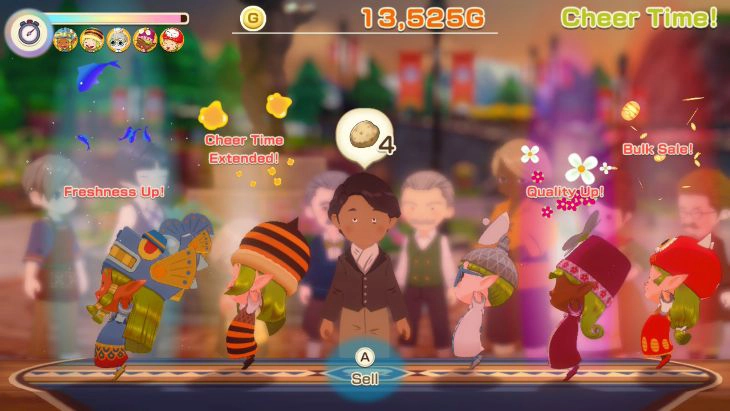
If you’ve progressed far enough to unlock the Nature Sprites, they’ll unlock a mechanic that allows you to go into a fever-like state. A bar will slowly fill as you sell items, and once you decide to activate the bar, your items will start to sell quickly thanks to the sprite’s help. The prices will also increase, making this moment a great time to rake in a lot of money.
Some items are unique to the Bazaar that you’ll want to purchase, such as animals to keep on your farm, upgrades for your stall, and much more. And as you upgrade the Bazaar and help villagers set up their own stalls, more items will be made available. You can upgrade your stand by purchasing items or being given items by other characters. These items have a variety of effects, such as increasing your table size (allowing you to display more items), increasing the monetary value of your items, and even just cosmetic decoration.
As this is a Story of Seasons game, there is plenty of farming for your harvesting needs. The farming in the game is pretty simplistic: you till the fields, plant the seeds, water the plants, and then eventually harvest. You can also use fertilizer once a day to increase the quality of your crops, which means that they sell for more money, or that any food dishes that you create using those ingredients are of a higher quality. However, you do have to keep track of the weather, as eventually natural disasters will hit your farm, and in those cases, your crops are in danger. However, if you construct barriers to protect your crops, you won’t find yourself set back by weather conditions.
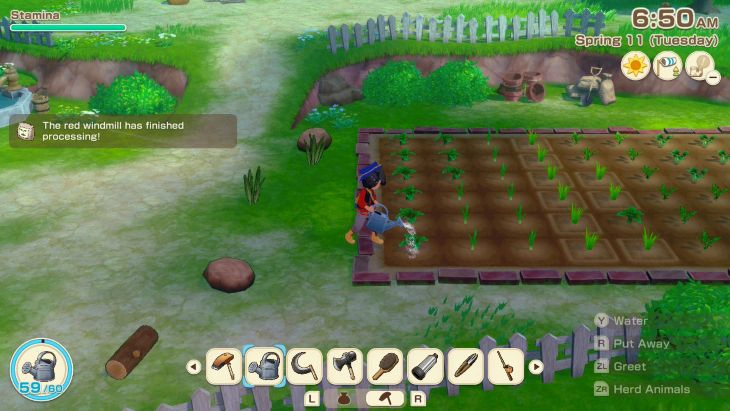
Along with your farm, you can also take care of animals, which in turn produce items that you can use to cook meals, such as eggs and milk. You’ll get your first animal, a chicken, for free but any past that point, you’ll have to purchase at the Bazaar. You’ll have a variety of items that you can use to groom them, and as long as you are feeding them and grooming/petting them, you’ll receive an item from your animals each day.
Crafting is mainly handled within the windmills, which open up as the game progresses. A lot of useful items, such as fertilizer or upgraded items, are made in the windmills. At the beginning, the windmills appear to be broken down, but as you progress through the game, they will one by one be repaired so that you can make use of them. There is a limit on the number of items that you can craft at one time, and they will be crafted in “real time”, with a notification going off once your item has finished being crafted. Crafted items are an easy way to make more money during the Bazaar if you are finding your weekly supply to be lacking for whatever reason. Fertilizer and upgrading your tools are both important to focus on, since fertilizer is easy to make to upgrade the quality of your crops, and upgraded tools make your workload more fruitful.
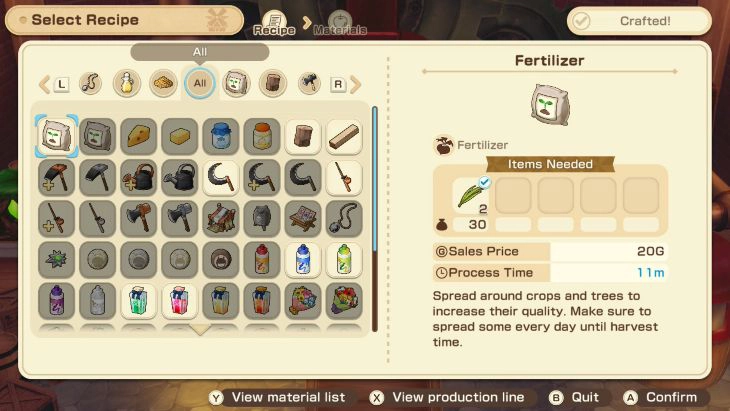
Story of Seasons: Grand Bazaar continues with its 3D not-quite-chibi but not-quite-full-human scale art style, with 2D sprites for the visual novel portions of the game. The models look nice, and their designs are cute and charming. It’s your standard Story of Seasons fare, and it’s done well. The town itself feels homely, and the Bazaar, while barren at first, does eventually reach a scale of liveliness. There are a few places within the game where the character can stop to admire the view, and they really nail the refreshing feeling of being in a small town.
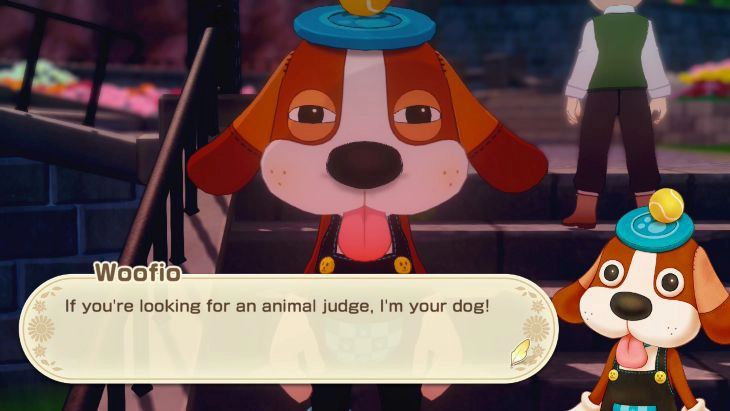
There is partial voice acting, with the choice of Japanese or English voices. The main story cutscenes are voiced, while other side content has your typical grunts and random noises. While there isn’t one particular standout among the cast, they do a nice job of setting the tone of a relaxing and soothing environment. Along with the soundtrack, with many tracks leaning into the bright village atmosphere, it rounds out to a nice experience. Sometimes, simple is best, and the art, voice acting, and music all come together to present a relaxing package.
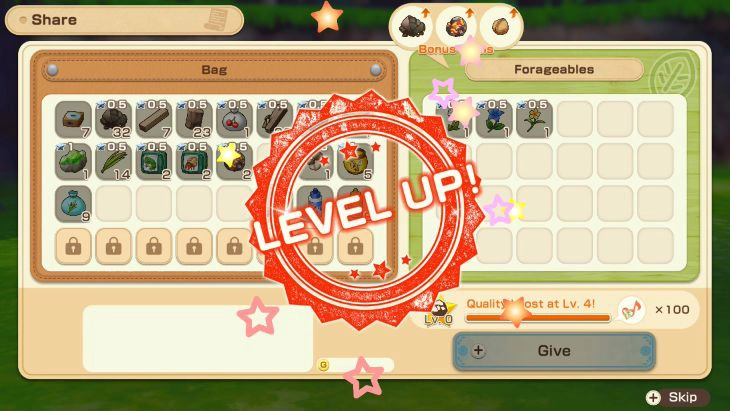
Story of Seasons: Grand Bazaar is a surprising title to play through. When you bring all of its game mechanics together, they’re all simplistic in their execution. And yet, that simplicity makes it easy to get into, as well as easy to pick up and put down. The gameplay loop of collecting items for the weekend Bazaar and then eventually selling them off is fun, especially as you unlock more mechanics to make your stand truly a force of its own.
Story of Seasons: Grand Bazaar gets a 7/10.